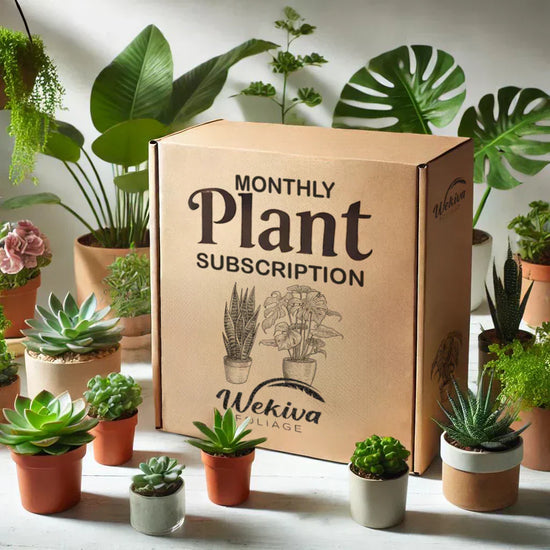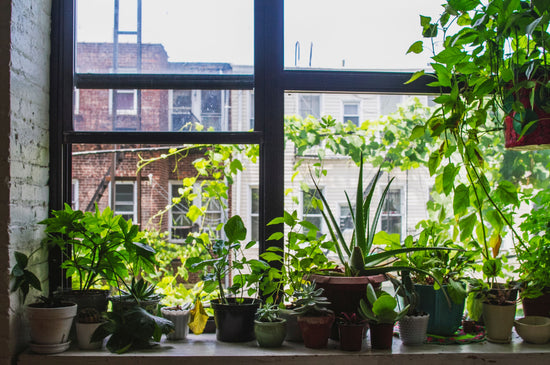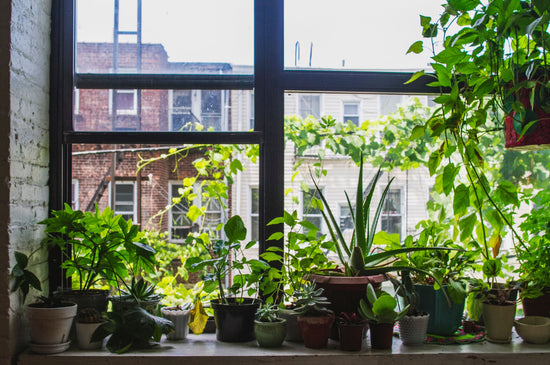Winter’s Best-Kept Secret: The Simple Tricks to Houseplant Happiness
As the colder months set in, houseplant enthusiasts often face unique challenges in maintaining their lush indoor jungles. Winter brings reduced sunlight, drier air, and fluctuating temperatures, all of which can stress your favorite greenery. However, with some simple tricks, you can ensure your houseplants not only survive but thrive during winter. Whether you’re caring for a resilient snake plant or a delicate peace lily, these tips will help keep your indoor plants healthy and vibrant throughout the season. Explore the best-kept secrets to houseplant happiness, and discover how to turn your winter woes into wins. For beautiful and resilient plants, check out the Wekiva Foliage Houseplants Collection.
1. Master Your Watering Routine
Winter calls for a significant adjustment in watering habits. Many indoor plants, including zz plants and philodendrons, go into a semi-dormant state, requiring less water. Always check the topsoil for dryness before watering and reduce the frequency to avoid waterlogging. Use lukewarm water to prevent shocking your plants with icy roots.
2. Boost Humidity Levels
Dry indoor air caused by heaters can sap moisture from your plants, leaving them wilted and stressed. Use pebble trays or invest in a humidifier to raise humidity levels. Grouping plants like pothos epipremnum and chlorophytum spider plants together can also create a microclimate with higher moisture.
3. Rotate for Light Balance
Winter days are shorter, and sunlight may not reach all parts of your indoor space. Rotate your devil’s ivy and zanzibar gem plants weekly to ensure even light distribution. Position light-loving plants near windows, and consider supplemental grow lights for species that demand brighter conditions, like christmas cacti.
4. Dust Off Leaves
Dust can accumulate on plant leaves, reducing their ability to photosynthesize efficiently. Use a damp cloth to gently clean leaves of your philodendrons and spider plants chlorophytum comosum every few weeks. Keeping them clean maximizes their absorption of winter’s limited light.
5. Adjust Fertilizer Use
Over-fertilizing during winter dormancy can harm your plants. Most indoor plants, like snake plants and peace lilies, benefit from minimal or no fertilization in winter. Resume regular feeding schedules in spring when growth picks up again.
6. Keep Plants Warm (But Not Too Warm)
Avoid placing plants near drafty windows, doors, or heating vents. Sudden temperature changes can stress even hardy plants like the zamioculcas plant. Maintain consistent temperatures between 65–75°F during the day, ensuring that it doesn’t drop below 50°F at night.
7. Use Reflective Surfaces to Maximize Light
To make the most of available light, place mirrors or reflective materials near your plants to bounce sunlight onto their leaves. This hack is particularly useful for indoor planters positioned in low-light corners.
8. Avoid Repotting
Winter is not an ideal time to repot most houseplants, as they’re not actively growing. If you must repot, choose only those plants showing signs of being root-bound, like pothos or christmas cacti, and use fresh potting soil suited for their specific needs.
9. Monitor for Pests
Winter is prime time for pests such as spider mites and aphids, as indoor environments offer them a cozy habitat. Inspect your indoor houseplants regularly and use natural pest control methods, like neem oil sprays, to keep infestations under control.
10. Enjoy Seasonal Blooms
Some plants, like the christmas cactus, come to life during winter, providing beautiful seasonal blooms. Ensure they have the right amount of indirect light and humidity to encourage flowering. Explore options like the stunning Christmas Cactus to brighten your winter décor.
FAQ: Winter Houseplant Care
1. How often should I water my houseplants during winter?
Water sparingly, allowing the top inch of soil to dry out between waterings. Overwatering is a common issue during winter dormancy.
2. Can I fertilize my houseplants in winter?
Fertilizing is generally not necessary during winter. If you do, use a diluted formula and apply sparingly.
3. What is the ideal temperature for indoor plants in winter?
Most houseplants thrive between 65–75°F during the day. Avoid exposing them to temperatures below 50°F.
4. How can I increase humidity for my tropical plants?
Use pebble trays, humidifiers, or group plants together to create a more humid environment.
5. Can I prune my houseplants during winter?
Light pruning is fine for removing dead or damaged leaves, but avoid heavy pruning until spring when growth resumes.
By following these simple tricks, you’ll ensure your houseplants remain healthy and happy throughout the winter. Whether you’re a seasoned plant parent or a beginner, these tips will make winter care a breeze. Explore the wide selection of houseplants and accessories at Wekiva Foliage and transform your home into a thriving indoor oasis.





